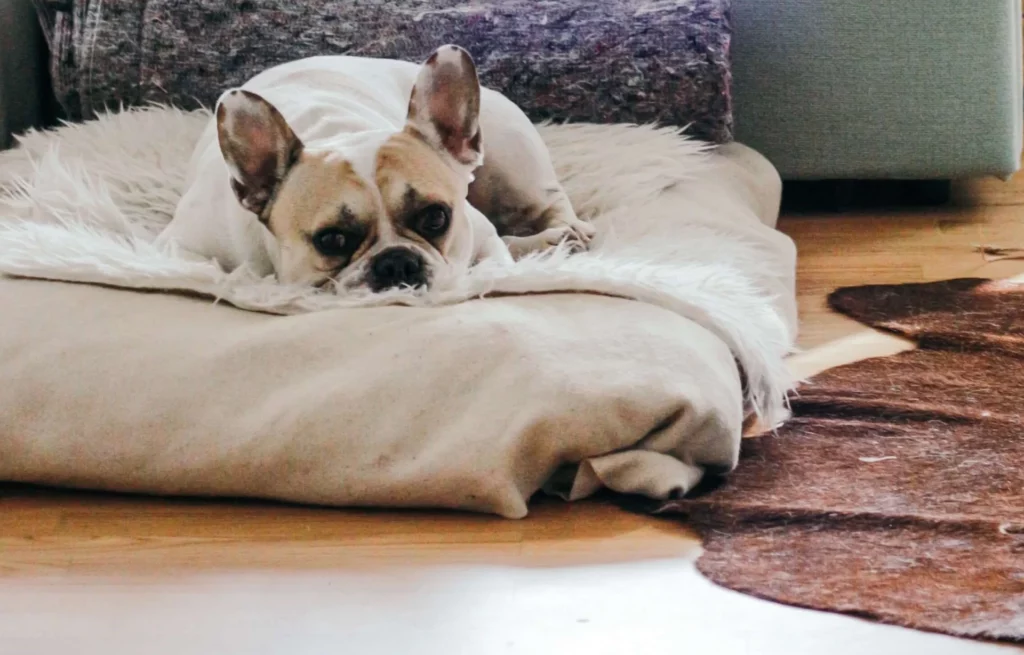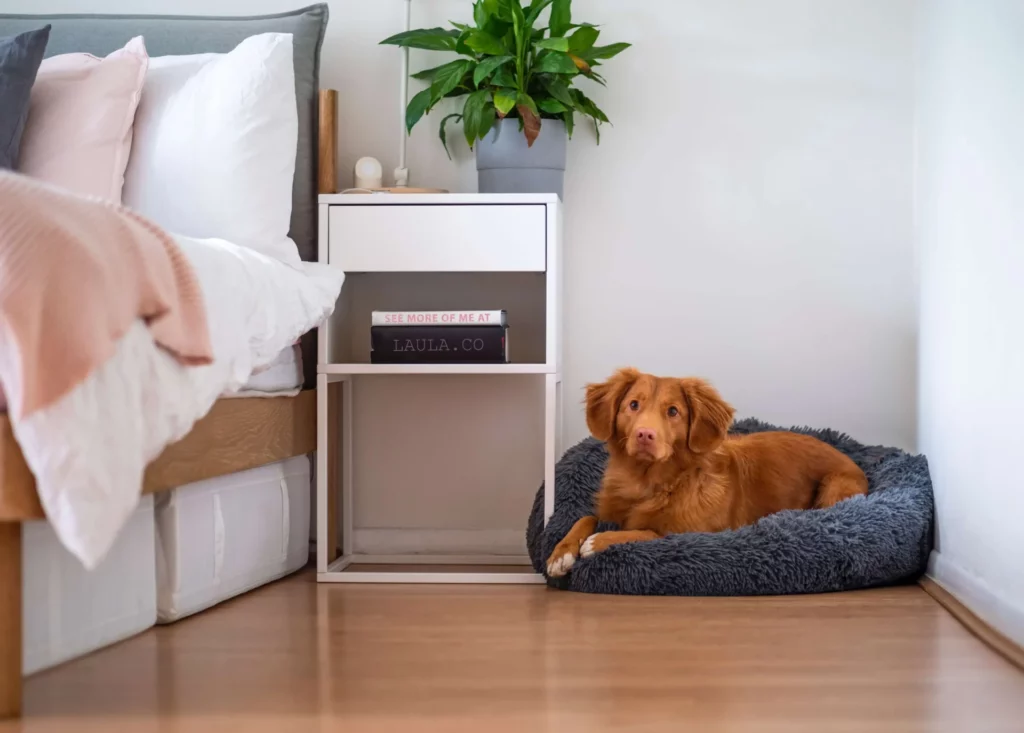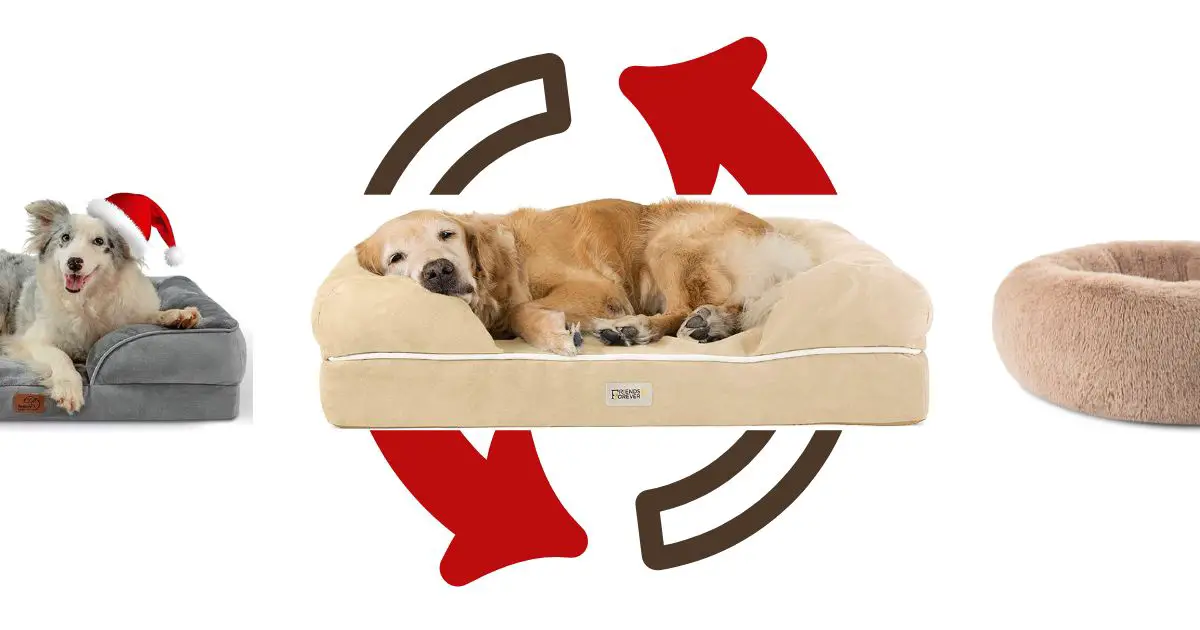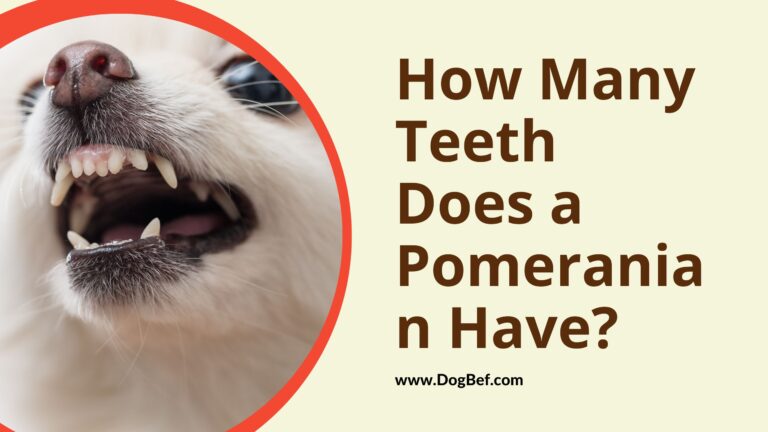How often should you replace a dog bed? The answer, my friends, lies in understanding the needs of our beloved furry companions. Dogs, much like us, seek comfort and security in their resting places. A well-maintained dog bed can provide the sanctuary they crave, but over time, wear and tear can take a toll.
In this blog post, we’ll explore the lifespan of a dog bed and reveal the telltale signs that indicate it’s time for a fresh start. So, let’s dive in and discover how often you should bid farewell to the old and welcome a new haven for your canine companion.
Signs Need to Replace a Dog Bed with New One
Dog bed provides support, comfort, and a safe place to sleep for your dog but if you notice your dog feels uncomfortable or appears some health issues (joints) or has an allergy then first check it with a specialist. it might be having the old dog bed and If you feel below these things in the dog bed then you need to replace a dog bed.

Worn and Damaged Dog Bed
A worn and damaged dog bed can be a devastating sight. It’s heartbreaking to know that your beloved pet has been sleeping on something so uncomfortable and uninviting. The damage could have been caused by wear and tear over time, or it could be due to chewing or scratching from your pet.
Regardless of the cause, a worn and damaged dog bed is an indication that it’s time for a replacement. A good quality bed will provide your pup with ample comfort while they sleep, as well as protection from potential injury or irritation. If you need a new bed then make sure you choose one that is durable and the bed has a removable and machine-washable cover so that you can keep it clean easily.
Solid, Strong, and Odor Dog Bed
Solid, strong, odors beds can be quite unpleasant and unsafe for your dog. Normally, dog beds often have urine or feces that has soaked into the fabric over time, causing an unpleasant smell that lingers for weeks or months after the bed has been cleaned.
And a strong bed can be unsupported and unhealthy for your dog to use, and an uncomfortable bed may not provide the support and comfort that your dog needs. That’s why it’s important to dog beds should be replaced
Uncomfortable and restless dog bed (Size issue, not supported)
If your dog feels uncomfortable and restless on his bed then your will need to make sure the size of the bed is fit to your dog’s size. If the dog bed is too small for your dog then it may not have to move around and get comfortable.
If the dog is too big then they are sinking in the middle of it and feel not safe in it. And you need to make sure that you don’t have a dog’s bed not too soft or too hard because using this bed may be problems with your dog’s health like joints, hips, etc.
Your pup deserves a comfortable place to sleep, so make sure you choose a dog bed that fits their size and also supports their body when they lay down. If you have these kinds of beds that are unsafe or uncomfortable for your dog then need to be replaced.
Causes allergies and skin irritation
Allergies and skin irritation can be caused by using a bad dog bed. Poor bedding materials, such as synthetic fabrics or foam, can cause reactions in some dogs due to their chemical compositions. Additionally, poorly-made beds may contain dust mites, which can cause skin irritation in sensitive animals.
Beds made of low-quality materials are also prone to mold and mildew growth which can further irritate your dog’s skin and cause a reaction. Regularly washing the bedding is essential to reduce allergens and maintain hygiene for your pet. Investing in quality hypoallergenic bedding for your pup is an easy way to ensure that they are comfortable and healthy while sleeping.
Dog bed age matter or expired bed
When it comes to dog bed age, expired beds can be a real problem. After all, you don’t want your pup sleeping on something that has been used beyond its intended limits and no longer offers the same level of comfort or support.
Expired beds can cause your pup to experience pain or even develop health issues if they are not replaced on time. Signs that a bed is expired include flattened cushions and sagging fabric, wear and tear on the material, and discoloration from dirt and dirt buildup. It is important to replace expired dog beds as soon as possible to keep your pup happy and healthy.
How do you take care of a dog bed?
A good quality dog bed should be made from high-quality and durable material that will last and keep your pup comfortable and supported. This will ensure that you know what cleaning supplies are safe to use, as well as proper storage procedures for when the bed isn’t in use. Additionally, check the padding regularly to make sure it’s still providing ample support, and replace it if necessary.

Choose or get a New Dog Bed with High-Quality Material
When you looking to replace your dog bed then it is important to choose an orthopedic and memory foam support bed. It should be durable enough to withstand your pup’s rough-housing and make sure the material is soft enough that your pup can snuggle up in it. Look for beds with bolstered walls or cushioned bolsters to help provide extra support while they sleep. Having an orthopedic memory foam bed with a waterproof liner and comfortable bolsters will ensure your pup gets the best night’s sleep they deserve.
Clean and Wash Dog Bed Regularly
Make sure your dog is sleeping in a washable bed and use a waterproof liner or cover to protect the bed from any accidents that may occur. You should regularly vacuum and spot-clean the bed as needed and you should wash the entire bed according to the manufacturer’s care guide. If possible, choose a dog bed with a removable and washable cover which will make cleaning much easier. Learn in detail how to wash dog beds with stuffing.
FAQs
How long can you keep a dog bed?
Remember, amigo, the lifespan of a dog bed depends on various factors. Quality craftsmanship, your dog’s habits, and regular cleaning play a role in determining its durability. On average, a well-maintained dog bed can last anywhere from one to five years. However, keep an eye out for signs of wear and tear, such as flattened padding or ripped fabric. When in doubt, it’s time for a new pet bed!
Should I use an old dog bed for a new dog?
While recycling is commendable, when it comes to dog beds, it’s best to start fresh, my friend. Each dog has its own unique scent, and providing a clean bed for your new furry family member helps them feel at home. An old bed may carry unfamiliar smells that could cause discomfort or anxiety. So, give your new pup the gift of a brand-new dog bed, tailored just for them.
Do dogs appreciate a clean bed?
Absolutely, compadre! Dogs have a keen sense of smell, and a clean bed not only pleases their olfactory receptors but also promotes their overall well-being. Just like we enjoy fresh sheets, our furry amigos appreciate a clean and comfortable resting spot. Regularly washing your dog’s bed removes dirt, odors, and potential pests, ensuring a cozy and hygienic sanctuary for your pup.
How many dog beds should a dog have?
Ah, the number of dog beds can vary, depending on your pup’s preferences and lifestyle. For most dogs, having a primary bed in their favorite spot is sufficient. However, it’s wise to consider additional beds if your dog enjoys spending time in different areas of your home or if you have multiple floors. Ultimately, the key is to provide a cozy retreat for both your dog and your home’s unique layout.
How do I keep my dog’s bed fresh?
To keep your dog’s bed smelling pleasant, follow these tips, amigo. First, regularly vacuum and spot-clean the bed to remove any loose fur, dirt, or debris. Additionally, use a pet-safe fabric freshener or sprinkle some baking soda on the bed before vacuuming to absorb odors. Washing the bed cover, insert, or entire bed (check the care instructions) periodically will help maintain freshness. Remember, a fresh bed is a happy bed!
How many times should you wash a dog bed?
Ah, the frequency of washing your dog’s bed depends on several factors, such as your dog’s habits, level of shedding, and any accidents they may have had. As a general rule, washing the bed cover every one to two weeks can help keep it clean and odor-free. However, if your pup is prone to accidents or has a skin condition, you may need to wash it more frequently. Observe your dog’s behavior and adjust the washing routine accordingly.
How often to change a dog bed?
Replacing your dog’s bed is necessary when signs of wear and tear become prominent, my friend. Typically, a good-quality dog bed can last one to 2 years, but keep an eye out for flattened padding, ripped fabric, or sagging. Additionally, if your dog has outgrown the bed or if it no longer provides adequate support, it’s time for an upgrade. Remember, a comfortable and well-maintained dog bed contributes to your pup’s overall happiness and well-being.
How often should replace my dog’s bed?
Ah, my friend, the frequency of replacing your dog’s bed depends on a few factors. Generally, a good-quality dog bed can last anywhere from one to 2 years. However, it’s essential to keep an eye out for signs that indicate the need for a replacement. If you notice flattened padding or torn fabric, or if the bed no longer provides sufficient support and comfort for your pup, it’s time to say adios to the old bed and bring in a new one. Remember, a fresh and comfortable bed ensures your dog has a cozy place to rest and rejuvenate.
How long does the average dog bed last?
Amigo, the lifespan of an average dog bed can vary depending on factors such as quality, usage, and your dog’s behavior. Generally, a well-made dog bed can last anywhere from one to two years. However, keep an eye out for signs of wear and tear, like flattened padding or damaged fabric. When you notice these signs, it’s time to consider replacing the bed to ensure your furry friend’s comfort and safety.
When should you throw out a dog bed?
Knowing when to bid farewell to a dog bed is important, compadre. If your dog’s bed is showing significant signs of wear and tear, such as flattened or lumpy padding, torn fabric, or damaged structural elements, it’s time to throw it out. Additionally, if the bed has absorbed strong odors or is difficult to clean thoroughly, it’s best to say adios and get a fresh and clean bed for your pup.
Can you reuse a dog bed for a new dog?
While recycling is admirable, when it comes to dog beds, it’s generally best to start fresh for your new pup, my friend. Dogs have sensitive noses and associate scents with comfort and security. Introducing a new dog to a bed that carries the scent of a previous dog may cause confusion or discomfort. So, to provide a smooth transition and a sense of belonging, it’s recommended to get a new dog bed tailored specifically for your new furry family member.







